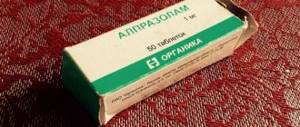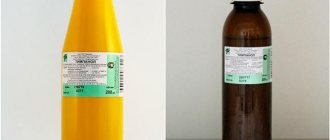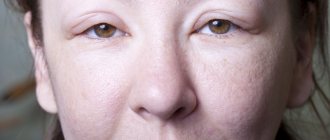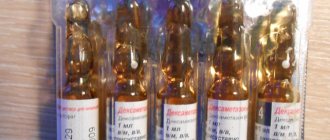Indications for use
What does Visanne help with? The main indication for the use of Visanne tablets is endometriosis - a pathology of the female reproductive system, in which ectopia (unusual localization) of the inner layer of the uterine wall (endometrium) develops.
Main symptoms of the disease:
- at the fourth stage of development, bowel or bladder emptying also causes intense pain;
- increase in volume of genital organs;
- prolongation of menstrual bleeding;
- infertility;
- pelvic pain of a cyclical nature;
- dyspareunia – pain during sexual intercourse.
Instructions for use
Visanne is prescribed for 6 months. The decision on further therapy is made by the doctor depending on the clinical picture. You can start taking pills on any day of the menstrual cycle. Take 1 tablet per day without interruption, preferably at the same time every day, if necessary, with water or other liquid.
The tablets must be taken continuously, regardless of vaginal bleeding. After completing the intake of tablets from one package, begin taking tablets from the next without taking a break from taking the drug. If you skip tablets and in case of vomiting and/or diarrhea (if this occurs within 3-4 hours after taking the tablet), the effectiveness of Visanne may be reduced.
If one or more tablets are missed, the woman should take 1 tablet as soon as she remembers and then continue taking the tablets at the usual time the next day. Instead of a tablet that is not absorbed due to vomiting or diarrhea, you should also take 1 tablet.
VISANNE
Preparation: VISANNE®
Active substance: dienogest ATC code: G03D KFG: Gestagen ICD-10 codes (indications): N80 Reg. number: LP-000455 Registration date: 03/01/11 Owner reg. cert.: BAYER SCHERING PHARMA (Germany) produced by SCHERING (Germany)
DOSAGE FORM, COMPOSITION AND PACKAGING
The tablets are white or off-white, round, flat, with beveled edges and debossed with “B” on one side.
| 1 tab. | |
| dienogest (micronized) | 2 mg |
Excipients: lactose monohydrate - 62.8 mg, potato starch - 36 mg, microcrystalline cellulose - 18 mg, povidone K25 - 8.1 mg, talc - 4.05 mg, crospovidone - 2.7 mg, magnesium stearate - 1.35 mg.
14 pcs.
- blisters (2) - cardboard boxes. 14 pcs. - blisters (6) - cardboard boxes. 14 pcs. - blisters (12) - cardboard boxes. INSTRUCTIONS FOR USE FOR SPECIALISTS.
The description of the drug was approved by the manufacturer in 2013. PHARMACOLOGICAL ACTION
Dienogest is a derivative of nortestosterone, characterized by antiandrogenic activity that is approximately one third of that of cyproterone acetate. Dienogest binds to progesterone receptors in the human uterus, having only 10% of the relative affinity of progesterone. Despite its low affinity for progesterone receptors, dienogest is characterized by a powerful progestogenic effect in vivo. Dienogest does not have significant mineralocorticoid or glucocorticoid activity in vivo.
Dienogest acts on endometriosis by suppressing the trophic effects of estrogens in relation to the eutopic and ectopic endometrium, due to a decrease in the production of estrogens in the ovaries and a decrease in their concentration in plasma.
With prolonged use, it causes initial decidualization of endometrial tissue followed by atrophy of endometriotic lesions. Additional properties of dienogest, such as immunological and antiangiogenic effects, appear to contribute to its inhibitory effects on cell proliferation.
There was no decrease in bone mineral density (BMD), and no significant effect of Visanne on standard laboratory parameters, including general and biochemical blood parameters, liver enzymes, lipids and HbA1C. Dienogest moderately reduces the production of estrogen in the ovaries.
PHARMACOKINETICS
Suction
After oral administration, dienogest is rapidly and almost completely absorbed. Serum Cmax of 47 ng/ml is achieved approximately 1.5 hours after a single oral dose. Bioavailability is about 91%. The pharmacokinetics of dienogest in the dose range from 1 to 8 mg is characterized by dose dependence.
Distribution
Dienogest binds to serum albumin and does not bind to sex hormone binding globulin (SHBG) or corticosteroid binding globulin (CBG). 10% of the total concentration of the substance in the blood serum is in the form of free steroid, while about 90% is nonspecifically bound to albumin.
The apparent Vd of dienogest is 40 l.
The pharmacokinetics of dienogest are independent of SHBG levels. The concentration of dienogest in the blood serum after daily administration increases approximately 1.24 times, reaching an equilibrium concentration after 4 days of administration. The pharmacokinetics of dienogest after repeated doses of Visanne can be predicted on the basis of the pharmacokinetics after a single dose.
Metabolism
Dienogest is almost completely metabolized, predominantly by hydroxylation to form several practically inactive metabolites. Based on the results of in vitro and in vivo studies, the main enzyme involved in the metabolism of dienogest is CYP3A4. Metabolites are eliminated very quickly, so that the predominant fraction in the blood plasma is unchanged dienogest.
The rate of metabolic clearance from serum is 64 ml/min.
Removal
The concentration of dienogest in the blood serum decreases in two phases. T1/2 in the terminal phase is approximately 9-10 hours. After oral administration at a dose of 0.1 mg/kg, dienogest is excreted in the form of metabolites, which are excreted through the kidneys and intestines in a ratio of approximately 3:1. T1/2 of metabolites when excreted by the kidneys is 14 hours. After oral administration, approximately 86% of the dose received is excreted within 6 days, with the main part excreted in the first 24 hours, mainly by the kidneys.
INDICATIONS
- treatment of endometriosis.
DOSING REGIME
The drug Visanne is prescribed for 6 months. The decision on further therapy is made by the doctor depending on the clinical picture.
You can start taking pills on any day of the menstrual cycle. Take 1 tablet/day without interruption, preferably at the same time every day, if necessary, with water or other liquid. The tablets must be taken continuously, regardless of vaginal bleeding. After completing the intake of tablets from one package, begin taking tablets from the next without taking a break from taking the drug.
If you skip tablets and in case of vomiting and/or diarrhea (if this occurs within 3-4 hours after taking the tablet), the effectiveness of Visanne may be reduced. If one or more tablets are missed, the woman should take 1 tablet as soon as she remembers and then continue taking the tablets at the usual time the next day. Instead of a tablet that is not absorbed due to vomiting or diarrhea, you should also take 1 tablet.
SIDE EFFECT
Side effects occur more often in the first months of taking Visanne, and their number decreases over time. The most common side effects include: vaginal bleeding (including spotting, metrorrhagia, menorrhagia, irregular bleeding), headache, breast discomfort, decreased mood and acne.
Table 1 lists adverse drug reactions (ADRs) categorized by organ system class. Side effects in each frequency group are presented in descending order of frequency. Frequency is defined as common (?1/100 to <1/10) and uncommon (?1/1000 to <1/100).
Table 1. Categorized indicators of the relative frequency of women with ADRs
| Often | Infrequently |
| From the hematopoietic system | |
| Anemia | |
| Metabolism and nutritional disorders | |
| Weight gain | Weight loss Increased appetite |
| From the side of the central nervous system | |
| Headache Migraine Low mood Sleep disturbance (including insomnia) Nervousness Loss of libido Mood changes | Peripheral nervous system imbalances Attention problems Anxiety Depression Mood swings |
| From the side of the organ of vision | |
| Feeling of dry eyes | |
| From the side of the hearing organ | |
| Tinnitus | |
| From the cardiovascular system | |
| Unspecified circulatory disorder Palpitations Arterial hypotension | |
| From the respiratory system | |
| Dyspnea | |
| From the digestive system | |
| Nausea Abdominal pain (including pain in the lower abdomen and epigastric pain) Flatulence Feeling of abdominal distension Vomiting | Diarrhea Constipation Abdominal discomfort Inflammatory diseases of the gastrointestinal tract Gingivitis |
| From the skin | |
| Acne Alopecia | Dry skin Hyperhidrosis Itching Abnormalities of hair growth, incl. hirsutism and hypertrichosis Onychoclasia Dandruff Dermatitis Photosensitivity reactions Pigmentation disorders |
| From the musculoskeletal system | |
| Back pain | Bone pain Muscle spasms Pain in the limbs Feeling of heaviness in the limbs |
| From the urinary system | |
| Urinary tract infection (including cystitis) | |
| From the reproductive system | |
| Breast discomfort (including breast enlargement and breast pain) Ovarian cyst (including hemorrhagic cyst) Hot flashes Uterine/vaginal bleeding (including spotting, metrorrhagia, menorrhagia, irregular bleeding) Amenorrhea | Vaginal candidiasis Dryness in the vulvovaginal area (including dry mucous membranes) Discharge from the genitals (including vaginal discharge) Pain in the pelvic area Atrophic vulvovaginitis Fibrocystic mastopathy Induration of the mammary glands |
| Others | |
| Asthenic condition (including fatigue, asthenia and malaise) Irritability | Swelling (including facial swelling) |
CONTRAINDICATIONS
Visanne should not be used in the presence of any of the conditions listed below, some of which are common to all drugs containing only a progestogen component. If any of these conditions develop while taking Visanne, use of the drug should be stopped immediately.
- acute thrombophlebitis, venous thromboembolism at present;
- diseases of the heart and arteries, which are based on atherosclerotic vascular lesions (including ischemic heart disease, myocardial infarction, stroke and transient ischemic attack) currently or in history;
— diabetes mellitus with vascular complications;
- severe liver disease currently or in history (in the absence of normalization of liver function tests);
- liver tumors (benign and malignant) currently or in history;
- identified or suspected hormone-dependent malignant tumors, incl. mammary cancer;
- bleeding from the vagina of unknown origin;
- history of cholestatic jaundice in pregnancy;
- galactose intolerance, lactase deficiency, glucose-galactose malabsorption;
- children and adolescents under 18 years of age (the effectiveness and safety of use in adolescents has not been established);
- hypersensitivity to the active substances or to any of the excipients.
With caution: history of depression, history of ectopic pregnancy, arterial hypertension, chronic heart failure, migraine with aura, diabetes mellitus without vascular complications, hyperlipidemia, history of deep vein thrombophlebitis, history of venous thromboembolism.
PREGNANCY AND LACTATION
Data on the use of Visanne in pregnant women are limited. Data obtained from animal studies and data on the use of dienogest in women during pregnancy have not identified a specific risk for pregnancy, fetal development, labor and development of the child after birth. The drug Visanne should not be prescribed to pregnant women due to the lack of need for treatment of endometriosis during pregnancy.
Taking Visanne during breastfeeding is not recommended, because Animal studies indicate that dienogest is excreted in breast milk.
The decision to stop breastfeeding or to refuse to take Visanne is made based on an assessment of the ratio of the benefits of breastfeeding for the child and the benefits of treatment for the woman.
SPECIAL INSTRUCTIONS
Before starting to take Visanne, pregnancy must be ruled out. While taking Visanne, if contraception is necessary, patients are advised to use non-hormonal contraceptive methods (for example, barrier).
Fertility
According to available data, while taking Visanne, most patients experience suppression of ovulation. However, Visanne is not a contraceptive.
According to available data, the physiological menstrual cycle is restored within 2 months after stopping Visanne.
The use of Visanne in women with a history of ectopic pregnancy or dysfunction of the fallopian tubes should be decided only after a careful assessment of the ratio of expected benefits and possible risks.
Since Visanne is a progestogen-only drug, it can be assumed that special warnings and precautions for the use of other drugs of this type apply to Visanne, although not all of them were confirmed in clinical studies of Visanne.
If any of the following conditions or risk factors are present or worsened, an individual benefit-risk assessment should be performed before starting or continuing to take Visanne.
Circulatory disorders
In the process of epidemiological studies, insufficient evidence was obtained to confirm the existence of a connection between the use of drugs with only a progestin component and an increased risk of myocardial infarction or cerebral thromboembolism. The risk of cardiovascular events and cerebrovascular accidents is more likely associated with increasing age, arterial hypertension and smoking. The risk of stroke in women with arterial hypertension may increase slightly when taking drugs with only a progestin component.
Epidemiological studies indicate the possibility of a statistically insignificant increase in the risk of venous thromboembolism (deep vein thrombosis, pulmonary embolism) due to the use of drugs with only a progestin component. Well-established risk factors for the development of venous thromboembolism (VTE) include a relevant family history (VTE in a sibling or parent at a relatively early age), age, obesity, prolonged immobilization, major surgery, or major trauma. In case of prolonged immobilization, it is recommended to stop taking Visanne (for planned surgery, at least four weeks before it) and resume use of the drug only two weeks after complete restoration of motor ability.
The increased risk of thromboembolism in the postpartum period should be taken into account.
If arterial or venous thrombosis develops or is suspected, the drug should be stopped immediately.
Tumors
A meta-analysis of 54 epidemiological studies revealed a small increase in the relative risk (RR = 1.24) of developing breast cancer in women who used oral contraceptives (OCs), predominantly estrogen-progestin drugs, at the time of the study. This increased risk gradually disappears over 10 years after stopping use of combined oral contraceptives. Because breast cancer is rare in women under 40 years of age, the slight increase in breast cancer diagnoses in women who are currently taking combined oral contraceptives or have previously used combined oral contraceptives is small relative to the overall risk of breast cancer. The risk of breast cancer detection in women using progestin-only hormonal contraceptives is probably similar in magnitude to the corresponding risk associated with the use of combined oral contraceptives. However, the evidence for progestin-only products is based on much smaller populations of women using them and is therefore less convincing than the evidence for combined oral contraceptives. It is not possible to establish a cause-and-effect relationship based on these studies. The observed pattern of increased risk may be due to earlier diagnosis of breast cancer in women taking OCs, the biological effects of OCs, or a combination of both factors. Malignant breast tumors that are diagnosed in women who have ever used OCs are usually clinically less severe than in women who have never used hormonal contraception.
In rare cases, benign and, even less frequently, malignant liver tumors have been reported during the use of hormonal substances similar to the one contained in Visanne. In some cases, these tumors have resulted in life-threatening intra-abdominal bleeding. If a woman taking Visanne has severe pain in the upper abdomen, an enlarged liver, or signs of intra-abdominal bleeding, then the differential diagnosis should take into account the possibility of a liver tumor.
Change in bleeding pattern
For most women, taking Visanne affects the nature of menstrual bleeding.
During the use of the drug Visanne, uterine bleeding may increase, for example, in women with adenomyosis or uterine leiomyoma. Heavy and prolonged bleeding can lead to anemia (in some cases severe). In such cases, discontinuation of Visanne should be considered.
Other states
Patients with a history of depression require careful monitoring. If depression recurs in a serious form, the drug should be discontinued.
Overall, Visanne does not appear to affect blood pressure in women with normal blood pressure. However, if persistent clinically significant arterial hypertension occurs while taking Visanne, it is recommended to discontinue the drug and prescribe antihypertensive treatment.
In case of relapse of cholestatic jaundice and/or cholestatic itching, which first appeared during pregnancy or previous use of sex steroids, Visanne should be discontinued.
Visanne may have minor effects on peripheral insulin resistance and glucose tolerance. Women with diabetes mellitus, especially those with a history of diabetes mellitus during pregnancy, require careful monitoring while taking Visanne.
In some cases, chloasma may occur, especially in women with a history of chloasma during pregnancy. Women prone to developing chloasma should avoid exposure to the sun or ultraviolet radiation while taking Visanne.
Persistent ovarian follicles (often called functional ovarian cysts) may occur while taking Visanne. Most of these follicles are asymptomatic, although some may be accompanied by pelvic pain.
Lactose.
1 tablet of Visanne contains 63 mg of lactose monohydrate. Patients on a lactose-free diet with rare hereditary disorders such as galactose intolerance, lapp lactase deficiency or glucose-galactose malabsorption should take into account the amount of lactose contained in Visanne.
Postmenopausal women
Not used in this category of patients.
Patients with renal failure
There are no data indicating the need for dose adjustment in patients with kidney disease.
Medical examination
Before starting or resuming taking Visanne, you should review the patient's medical history in detail and conduct a physical and gynecological examination. The frequency and nature of such examinations should be based on existing standards of medical practice with the necessary consideration of the individual characteristics of each patient (but at least once every 3-6 months) and should include blood pressure measurement, assessment of the condition of the mammary glands, abdominal cavity and pelvic organs, including cytological examination of the cervical epithelium.
Use in pediatrics
Visanne is contraindicated in children and adolescents under 18 years of age (the effectiveness and safety of use in adolescents has not been established).
Impact on the ability to drive vehicles and operate machinery
As a rule, Visanne does not affect the ability to drive a car or operate machinery, however, patients who have difficulty concentrating should be careful.
OVERDOSE
No serious adverse events have been reported following overdose. Symptoms that may occur in case of overdose: nausea, vomiting, spotting or metrorrhagia. There is no specific antidote; symptomatic treatment should be carried out.
DRUG INTERACTIONS
Selected enzyme inducers or inhibitors (CYP3A isoenzyme)
Gestagens, incl. dienogest are metabolized primarily with the participation of CYP3A4, located both in the intestinal mucosa and in the liver. Therefore, inducers or inhibitors of CYP3A4 may affect the metabolism of progestin drugs.
Increased clearance of sex hormones due to enzyme induction can lead to a decrease in the therapeutic effect of Visanne and also cause side effects, for example, a change in the nature of uterine bleeding.
Decreased clearance of sex hormones due to enzyme inhibition may increase dienogest exposure and cause side effects.
Substances capable of inducing enzymes
Interactions may occur with drugs that induce microsomal enzymes (eg, cytochrome P450 systems), as a result of which the clearance of sex hormones may be increased (such drugs include phenytoin, barbiturates, primidone, carbamazepine, rifampicin and possibly also oxcarbazepine, topiramate, felbamate , nevirapine, griseofulvin, as well as preparations containing St. John's wort).
Maximum enzyme induction is usually observed no earlier than 2-3 weeks, but can then persist for at least 4 weeks after cessation of therapy.
The effect of the CYP3A4 inducer rifampicin was studied in healthy postmenopausal women. When rifampicin was taken concomitantly with estradiol valerate/dienogest tablets, a significant decrease in the steady-state concentration and systemic exposure of dienogest was observed. Systemic exposure of dienogest at steady state concentration, determined by AUC (0-24 hours), was reduced by 83%.
Substances that can inhibit enzymes
Known CYP3A4 inhibitors such as azole antifungals (eg, ketoconazole, itraconazole, fluconazole), cimetidine, verapamil, macrolides (eg, erythromycin, clarithromycin, and roxithromycin), diltiazem, protease inhibitors (eg, ritonavir, saquinavir, indinavir, nelfinavir), antidepressants (for example, nefazodone, fluvoxamine, fluoxetine) and grapefruit juice may increase the concentration of gestagens in the blood plasma and cause side effects.
In one study examining the effect of CYP3A4 inhibitors (ketoconazole, erythromycin), plasma concentrations of estradiol valerate and dienogest at steady state were increased. In the case of simultaneous administration with the powerful inhibitor ketoconazole, the AUC value (0-24 hours) at steady-state concentration of dienogest increased by 186%. When co-administered with the moderate CYP3A4 inhibitor erythromycin, the AUC value (0-24 hours) of dienogest at steady-state concentration increased by 62%. The clinical significance of these interactions is unclear.
Effect of dienogest on other medicinal substances
Based on in vitro inhibition studies, a clinically significant interaction of Visanne with cytochrome P450 enzyme-mediated metabolism of other drugs is unlikely.
Note: To identify possible interactions, you should read the instructions for concomitant medications.
Food interaction
Eating a high-fat meal did not affect the bioavailability of Visanne.
Other types of interaction
Taking gestagens may affect the results of some laboratory tests, including biochemical parameters of liver, thyroid, adrenal and kidney function, plasma concentrations of protein(s), such as lipid/lipoprotein fractions, parameters of carbohydrate metabolism and coagulation parameters.
CONDITIONS OF VACATION FROM PHARMACIES
The drug is available with a prescription.
CONDITIONS AND DURATION OF STORAGE
The drug should be stored out of the reach of children at a temperature not exceeding 30°C. Shelf life: 5 years.
pharmachologic effect
Dienogest, the main active component of Visanne tablets, is a chemical derivative of nortestosterone, that is, it is characterized by strong antiandrogenic activity. The active substance has a relative affinity for progesterone of 10%, which manifests itself in a powerful progestogenic effect.
Dienogest binds to progesterone receptors in a woman's uterus, after which it exerts its therapeutic effects. Thus, with endometriosis, the endogenous production of estradiol decreases, as a result of which its trophic influences are suppressed at both the eutopic and ectopic levels.
Subsequently, with continuous treatment with tablets, the active component, creating a specific endocrine environment, causes the initial stage of decidualization of endometrial tissue, that is, layer-by-layer exfoliation of the affected integument. The next stage is atrophy of endometroid lesions, elimination of the pathophysiological cause of this nosological unit.
It should not be forgotten that the biological effects of Dienogest also include immunological and antiangiogenic. These properties of the active component of the pharmaceutical drug for women make it possible to significantly inhibit cell proliferation, their maturation and the germination of blood vessels into newly formed integuments. In this way, the tendency of endometriosis to spread is suppressed.
Treatment of endometriosis with Visanne
Particular attention should be paid to this drug, since many patients note its effectiveness, and doctors actively use it in their practice. As numerous observations show, Visanne for endometriosis allows patients to get rid of the disease and increase the likelihood of pregnancy.
What explains its effectiveness? To answer this question, it is necessary to consider the principle of action of this remedy on the female body.
Focal enlargement of the endometrium, the lining of the uterus, is caused by excessive action of sex hormones. Visanne contains the substance dienogest, which can inhibit their activity.
It is important to treat endometriosis with Visanne in accordance with the specialist’s instructions regarding the intended duration of administration and dosage. Only in this case will the drug be able to suppress the increase in pathological foci. As a result, as doctors and patients note, success is achieved, and the treatment of endometriosis with Visanne ends in recovery, as the reverse development of the altered cells is observed. The main advantages of Visanne include the absence of addiction and ease of use.
Contraindications
- vaginal bleeding of unknown origin;
- venous thromboembolism currently, acute thrombophlebitis;
- pathologies of the heart and arteries caused by atherosclerotic vascular lesions: coronary heart disease, transient ischemic attack, stroke, myocardial infarction (including medical history);
- benign and malignant liver tumors (including medical history);
- lactase deficiency, galactose intolerance, glucose-galactose malabsorption syndrome;
- pregnancy;
- indication in the anamnesis of cholestatic jaundice of pregnant women;
- hypersensitivity to the components of the drug;
- severe liver disease (including medical history) – in the absence of positive dynamics in the results of liver tests;
- breast cancer and other hormone-dependent malignant neoplasms, including those suspected;
- diabetes mellitus with vascular complications;
- breast-feeding.
Caution should be exercised when prescribing Visanne to women with a history of depression, arterial hypertension, chronic heart failure, diabetes mellitus without vascular complications, hyperlipidemia, migraine with aura, a history of deep vein thrombophlebitis, venous thromboembolism and/or ectopic pregnancy.
By
Side effects
- nervousness;
- anemia;
- heartbeat;
- feeling of dry eyes;
- atrophic vulvovaginitis;
- loss of libido;
- weight gain;
- dermatitis;
- swelling (including facial swelling);
- hyperhidrosis;
- discomfort in the abdominal area;
- muscle spasms;
- pain in the limbs;
- bleeding from the vagina (including spotting, metrorrhagia, menorrhagia, irregular bleeding);
- weight loss;
- alopecia;
- sleep disturbance (including insomnia);
- pain in the pelvic area;
- acne (pimples);
- dandruff;
- onychoclasia;
- feeling of heaviness in the limbs;
- flatulence;
- dry skin;
- unspecified circulatory disorder;
- constipation;
- decreased mood;
- back pain;
- gingivitis;
- ovarian cyst (including hemorrhagic cyst);
- arterial hypotension;
- diarrhea;
- discomfort in the mammary glands;
- depression;
- low mood;
- nausea, vomiting;
- irritability;
- tinnitus;
- dyspnea;
- increased appetite;
- headache;
- attention disorder;
- anxiety;
- migraine;
- fibrocystic mastopathy;
- bone pain;
- vaginal candidiasis.
Side effects
If the concentration of Visanne in the body turns out to be excessively high, you need to monitor the manifestation of possible symptoms of an overdose in order to carry out symptomatic treatment if necessary. The signs are:
- nausea, vomiting, stomach pain;
- spotting vaginal discharge.
The metabolism of body cells undergoes significant changes during hormonal treatment. The level of circulation of active substances taken as part of the product decreases, and side effects of drugs may appear that would not be noticeable under normal conditions. Medications that affect the therapeutic effect and clinical picture when taking the drug include:
- enzyme-inducing substances (Phenytoin, antibiotics Carbamazepine and Rifampicin, Primidon);
- preparations containing St. John's wort and presumably medications: Oxcarbazepine, Topiramate, Felbamate, Ritonavir, Griseofulvin, Nevirapine;
- substances that inhibit enzymes (antifungals, Verapamil, Cimetidine, macrolides Erythromycin, Clarithromycin, Roxithromycin, antidepressants).
The most significant side effect of the drug Visanne appears at the initial stage of the course of hormonal therapy. Over time, the negative effect weakens. If unpleasant symptoms persist or worsen, you should consult with your doctor about the possibility of continuing treatment with the chosen remedy. A reaction to the drug can manifest itself in the following life support systems of the body:
- hematopoietic – a decrease in the concentration of hemoglobin and the number of red blood cells in the blood;
- metabolism – change in body weight, appetite disorder;
- gastrointestinal tract – nausea, vomiting, stomach pain, digestive disorders;
- skin – acne, hair loss, dry skin, increased sweating, excessive body hair growth, increased fragility of nails and hair, seborrhea, dermatitis, skin pigmentation;
- reproductive system - enlarged mammary glands, pain, mastopathy, the appearance of lumps in the breast area, menstrual irregularities, thrush, leucorrhoea, open uterine bleeding;
- central nervous system - migraines, causeless headaches, sleep disorders, changes in sexual desire, mood swings, increased anxiety, depression, attention disorder, inability to concentrate, tinnitus, increased fatigue;
- cardiovascular system - circulatory disorders, tachycardia, blood pressure surges, hypertension;
- musculoskeletal system - pain in the sacrum and lower back, cramps and spasms of the limbs;
- excretory system - increased susceptibility to urinary tract infections.
The active substance does not have a negative effect on the body. Studies have established the following connections between the drug and the pathologies of patients:
- for cardiopathy, the drug does not significantly affect the possible risks of heart attack or stroke;
- the cause-and-effect relationship between the use of the drug and the occurrence of breast cancer has not been proven;
- In women with uterine pathologies, bleeding increases, which can lead to anemia.
An overdose of the drug practically does not occur, since the tablet contains a small amount of the active substance, and an overdose will not occur if you take an extra tablet.
Studies show that even a large dose of dienogest does not adversely affect the health of patients. There is no antidote.
Like any drug, the medication can have side effects. They are usually observed in the first days of using the drug. Among the negative impacts on patients were:
- increase in body weight (on average up to 6 kg);
- depression, fatigue, drowsiness;
- headaches and migraines;
- pain in the lower back, back;
- nausea and vomiting;
- discomfort in the chest area, feeling of heat;
- irritability.
In rare cases, weight loss, anemia, shortness of breath, bone and muscle pain have been observed. If side effects from Visanne are detected, the drug is replaced with an analogue.
Unfortunately, there are diseases that cannot be cured with ordinary herbal or synthetic medicines. If the disease is serious, doctors recommend turning to hormonal medications, which have repeatedly proven their effectiveness.
If you read numerous reviews, Visanne is an effective hormonal remedy for treating the female body. The reproductive system is the most important for procreation, so it must work perfectly. Dienogest is known to affect receptors in the uterus.
This is one of the components of Visanne, which is similar to the hormone progesterone.
Endometriosis is a disease of the female reproductive system in which endometrial cells begin to grow rapidly and extend beyond this layer. This phenomenon is associated with increased production of estrogen.
Progesterone medications help stop the process that has begun and prevent the disease from disrupting the functions of the reproductive system. For this, gynecologists prescribe the drug “Visanne” (tablets) to their patients. Feedback from women shows that the use of the medicine does not affect overall health.
At the same time, the bones remain strong because the necessary minerals are not washed away during treatment.
You should be careful about treatment with Visanne if you are prone to depression, have high blood pressure, migraines, high cholesterol, heart failure, or have previously suffered thrombophlebitis.
You should not use this medicine if:
- blood clots and high blood clotting;
- heart attack, ischemia, atherosclerosis and other diseases of the heart and blood vessels;
- jaundice of pregnant women, liver diseases;
- diseases of the vascular system caused by diabetes;
- during pregnancy and breastfeeding;
- carbohydrate metabolism disorders;
- bleeding from the vagina that was not diagnosed by a gynecologist;
- for malignant and hormone-dependent tumors;
- treatment of postmenopausal women and minor girls.
Application
Take one tablet a day without breaks - this is the instructions for this drug. It is better to develop an exact dosage regimen so that a portion of the hormone enters the body at the same time. To maximize the effect, hormonal medications should be taken for a fairly long period. Your gynecologist will tell you which one. During treatment, you will need to undergo periodic ultrasound scans to monitor the endometrium. Now you can study reviews about the drug "Visanne".
During treatment with hormones, the following side symptoms are often encountered: weight gain, sudden mood swings, severe aggressiveness or irritability, tearfulness, sleep disturbances, pain in the head or abdomen, bloating, discomfort in the back, nausea, hair loss, painful sensations in the breasts. glands, bleeding from the vagina, a feeling of heat throughout the body. If you experience any such symptoms, you should tell your doctor about it.
The drug has an effective effect on a woman’s body and overall well-being, as evidenced by these reviews. “Visanne” has been tested by many and has cured more than one organism. Some people even manage to lose weight after using the drug, although they notice a decrease in libido and bouts of irritability.
Judging by the reviews, not every woman experiences painful sensations. It is known that the negative effects disappear after a week, and menstruation has become painless. The condition of hair and skin improves. Some unwanted effects vary from person to person. Gynecologists are absolutely delighted and highly praise this drug.
After this appointment, many patients successfully became pregnant.
But doctors warn that women should take contraception very seriously, because they cannot become pregnant while undergoing treatment. If pregnancy does occur, then you need to stop using this hormonal drug and go to see a doctor. There are women who want to get pregnant, but they had endometriosis and underwent a cleanse.
In this case, gynecologists also prescribe Visanne tablets and advise you to be careful in your sexual life. After stopping the course of treatment, you can safely plan your pregnancy. It is enough to take the drug for three months according to the prescribed treatment regimen. After this, you are sent for an ultrasound to monitor the endometrium. Usually the effect of the course is positive and the study indicators show the norm.
Some women experience side effects from using the drug less than a week later. Even those who drink Visanne for two months experience one or more adverse effects, such as facial rashes and hair loss, prolonged insomnia and abdominal discomfort.
More about the drug
- It is worth considering the opinion of gynecologists by reading their positive reviews. “Visanne” makes the endometrial layer in the uterus more dense, loose tissue (foci) gradually disappears, which indicates recovery.
- If you missed taking a pill, had diarrhea or vomiting, take a new pill immediately, as a sharp reduction in the dose in the body is unacceptable.
- Also, under no circumstances should you suddenly stop using the medication. This can disrupt the menstrual cycle and then surgery cannot be avoided.
- What else do the reviews indicate? "Visanne" is a drug that if you adhere to the prescribed treatment regimen, the desired pregnancy can occur very quickly.
This is a hormonal agent with a gestagenic effect. Taking pills can suppress estrogen activity, resulting in the elimination of the cause of the disease.
About the drug
Visanne is based on the active ingredient Dienogest. Its effectiveness is as follows:
- stopping excessive growth of the endometrium;
- normalization of hormonal levels as a result of suppression of excess estrogen production;
- depletion of blood vessels supplying endometrioid tissue;
- a decrease in the total number of nerve endings in the foci of endometriosis, which gives an analgesic effect;
- reduction of the inflammatory process;
- decreased production of prostaglandins, which cause pain.
special instructions
Before you start taking Visanne tablets, you must carefully read the instructions. There are several special instructions regarding the use of the drug, which include:
- The drug can interact with various medications, so if they are taken in parallel, you must warn your doctor about this.
- Before starting to use the drug for the treatment of endometriosis, it is necessary to exclude pregnancy, since if it is present, therapy for this pathology is not carried out.
- While taking the pills, you cannot simultaneously use oral contraceptive methods using hormonal drugs.
- The drug does not affect the speed of psychomotor reactions and concentration.
With caution, Visanne tablets are used in women with a tendency to depression, a history of ectopic pregnancy, disorders of lipid (fat) metabolism, and the presence of thromboembolic processes in the past, including thrombophlebitis. In these cases, the drug is prescribed only after a thorough analysis of the risk/benefit ratio of its use.
The use of Visanne tablets for nursing women is not recommended, as the active substance passes into breast milk, which can affect the condition of the infant.
Causes of endometriosis development
Experts have not yet established the exact causes of the disease. However, this does not exclude the role of heredity. The most likely causes of the development of this gynecological disease include systemic pathologies caused by a malfunction in hormonal and immune processes. In this regard, hormonal drugs are used in the treatment process: for example, Visanne for endometriosis gives confirmed positive results.
Risk factors that contribute to the occurrence of the disease have been identified:
- childbirth with complications;
- childbirth after 30 years of age;
- abortions;
- C-section;
- performed diathermocoagulation of the cervix.
The last factor is dangerous if the intervention occurred immediately before menstruation. Endometrial cells may invade the wound surface, and subsequently growths may appear.
Drug interactions
With simultaneous use of Visanne: inducers of microsomal enzymes of the cytochrome P450 system:
- phenytoin, barbiturates, primidone, carbamazepine, rifampicin, oxcarbazepine, topiramate, felbamate, nevirapine, griseofulvin, products containing St. John's wort - increase the clearance of sex hormones and reduce the therapeutic effect of the drug;
- CYP3A4 inhibitors: azole antifungals (including itraconazole, ketoconazole, fluconazole), verapamil, cimetidine, macrolides (including erythromycin, roxithromycin, clarithromycin), protease inhibitors (such as ritonavir, indinavir, saquinavir, nelfinavir), diltiazem, antidepressants (including nefazodone, fluoxetine, fluvoxamine), grapefruit juice - help increase the concentration of dienogest in the blood plasma and the risk of side effects.
During the treatment period, it is necessary to carefully study the instructions for any concomitant therapy drug for interaction with gestagen. This will avoid the development of adverse events, including changes in the nature of uterine bleeding.
The action of Visanne distorts the results of laboratory tests such as biochemical functional parameters of the liver, adrenal glands and kidneys, thyroid gland, blood coagulation parameters,
Analogs
There are no absolute substitutes or analogues for Visanne. In the pharmacy chain you can buy combination drugs that contain Dienogest, its concentration is also 2 mg.
All these substitutes belong to the group of oral contraceptives. In addition to Dienogest, their ingredient is estrogen.
Contraceptives are prescribed to prevent unwanted pregnancy, but can also be used to treat endometriosis. These medications require constant use.
When prescribing, the factor of development of side effects is taken into account.
Dienogest dosage 2 mg is an ingredient in the following drugs:
- Bonade . Manufacturer: Czech Republic, blister contains 21 tablets. The average price is 500 rubles.
- Janine. Produced in Germany. Its cost is 900 rubles. It has relatively few side effects and contraindications.
- Genetten. It is produced by a German pharmaceutical company, but it is difficult to find in the pharmacy chain.
- Climodien. Produced by the German company Schering. It has a good reputation among buyers, but is not available to everyone due to its high price. It is 3600 rubles. For a package containing 28 pills.
In addition to these drugs, they may prescribe drugs that are similar in action, but have a different chemical structure:
- Duphaston or Norkolut.
- Mirena.
- Megues.
Duphaston
Megays
Mirena
Norkolut
Analogues of the drug Visanne
Treatments for endometriosis include:
- Diferelin;
- Decapeptyl depot;
- Danodiol;
- Danoval;
- Indinol;
- Lucrine depot;
- Danol;
- Buserelin;
- Buserelin long FS;
- Orgametril;
- Buserelin depot;
- Duphaston;
- Prostap;
- Vero Danazol;
- Nemestran;
- Zoladex;
- Omnadren 250;
- Derinat;
- Decapeptyl;
- Epigallate;
- Norkolut;
- Nor will be mowed down.











